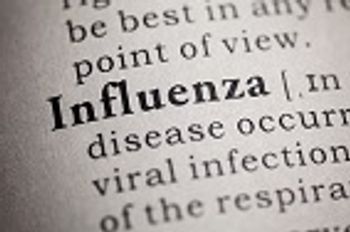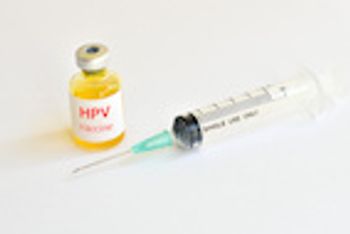
A new study by Public Health England researchers finds that disinfectants used against Klebsiella pneumoniae may be helping the pathogen develop new antibiotic resistance.

A new study by Public Health England researchers finds that disinfectants used against Klebsiella pneumoniae may be helping the pathogen develop new antibiotic resistance.

A new study from United Kingdom researchers finds that nearly one-quarter of the global population is infected with latent tuberculosis (TB), a finding that exposes the challenges ahead for the World Health Organization’s End TB Strategy.

Researchers in the United States and South Korea recently studied the use of an experimental nanoparticle treatment that acts as a decoy to stop and kill the influenza virus.

Researchers at University of Chicago Medicine have created an antibiotic stewardship training program for internal medicine residents that incorporates social media platforms, offering a technological tool for a growing health problem.

Drug maker Melinta has submitted their new antibiotic Baxdela for review by the US Food and Drug Administration, with the hopes that it will bring a new treatment option for people suffering from methicillin-resistant Staphylococcus aureus (MRSA).

The World Health Organization (WHO) has released their Global Tuberculosis Report for 2016, emphasizing that today’s global actions and investments are falling far short of what is needed to stop the worldwide tuberculosis (TB) epidemic.

With new US Food and Drug Administration rules on antibiotics in agriculture taking effect at the start of 2017, challenges remain when it comes to the reduction of antimicrobial use in livestock.

Methicillin-resistant Staphylococcus aureus (MRSA) causes more than 11,000 deaths in the United States each year and a new study shows how this pathogen is able to evade last-line antibiotics.

Researchers have not been able to develop a vaccine for hepatitis C, which causes 700,000 deaths around the world annually, and now, a new study shows why developing a vaccine for the virus has been so difficult.

Doctors at the Children’s Hospital Colorado have published their research on a new approach to antibiotic stewardship, with promising reductions in antibiotic use and rates of Clostridium difficile.

Researchers from Sweden’s Linköping University discover the pathway that leads to deadly infections in people co-infected with HIV and TB.

With social media serving as a news source to so many, researchers from the Medical College of Wisconsin and the Tulane University School of Medicine studied how Facebook users are talking about the Zika virus.

The United Nations Children’s Fund (UNICEF) has partnered with six vaccine makers and the Global Alliance for Vaccines and Immunization (GAVI) to offer 450 million doses of an inexpensive pentavalent vaccine for children.

As the flu hits New Mexico, hundreds are reporting symptoms, while infection has only been lab-confirmed in two cases.

The first influenza cases of the 2016-2017 season were reported by the Minnesota Department of Health, a reminder for state residents to receive influenza vaccination.

A new study shows that using antimicrobial copper can kill surface bacteria and minimize pathogens in hospital rooms.

The first days of life are crucial for any newborn, and a new study has found that a protein in breast milk plays an important role in protecting infants from catching hospital-acquired infections.

While health officials continue to search for more novel tools to fight tuberculosis, a team of researchers has found that a class of antibiotics first introduced in the 1960s may offer an important weapon against the outbreaks of today.

As hospitals continue to search for new ways to limit their number of patients acquiring Clostridium difficile (C. difficile) infections, a new study shows promise in the use of ultraviolet light technology for ridding patient rooms of highly resistant C. difficile spores.

Although they’re often life-saving, all hospital operations come with the risk of surgical site infections. C-section are no different, researchers, in a recent medical trial, have found a way to slash post-operative infection rates with the use of an extra antibiotic.

With the use of antibiotics remaining high and steady in American hospitals and healthcare facilities, new rules on infection prevention and antibiotic use are set to bring changes to thousands of nursing homes, nationwide.

In the 10 years since the human papilloma virus (HPV) vaccine first became available, a series of new studies have come out showing just how effective the virus really is and how HPV vaccination rates can be improved in adolescents.

Researchers in a recent study investigated how mixed messages delivered by vaccine manufacturers may prevent women from receiving the safe and effective influenza vaccine during pregnancy.

The recent spate of hand, foot, and mouth disease outbreaks continue to vex East Coast schools and universities, as health officials are reporting new and continuing clusters of the virus.

Researchers recently studied the way people expressed their pro-vaccination and anti-vaccination opinions on Facebook to understand how people discuss and spread these views.

The Centers for Disease Control and Prevention (CDC) has awarded scientists combating antibiotic resistance with more than $14 million in funding for new research and innovations by universities, nonprofits, and the business community.

Consumer Reports recently evaluated more than 3,100 hospitals in the United States and found that about a third of them received a low rating for controlling infections from Clostridium difficile.

Following the recent United Nations General Assembly meeting to discuss the growing global threat of antimicrobial resistance, health experts are highlighting the role vaccines can play in preventing dangerous infections.

The World Health Organization (WHO) recently met to establish new guidelines for the Southern Hemisphere’s 2017 influenza virus vaccine.

As antibiotic-resistant bacteria continue to endanger public health, greater attention from health officials and new US federal funding aimed at fighting superbugs, signal a new urgency in this battle.